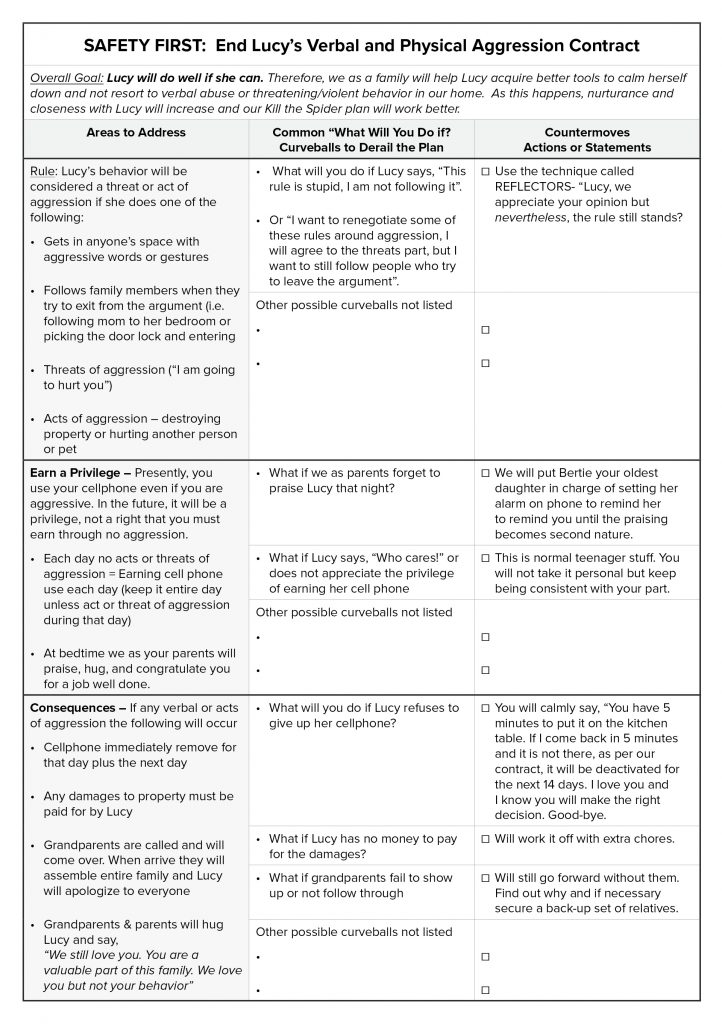Trauma treatment is more challenging when the entire family is treated, not just the child. A central reason for this is based on our research on what we term as interactional trauma within Chapter 2 of Treating the Traumatized Child: A Step-by-Step Family Systems Approach.
Interactional trauma takes place when there is constant bickering, yelling, and conflict between parent and child over many months or years. In this toxic environment, an unhealed traumatic event cannot heal. A good analogy is a wound’s inability to heal when it is constantly being reopened. Within this context, the trauma therapist must possess the skills to stabilize the interactional trauma or parent-child conflict before moving into direct trauma. Or use what we term a hybrid approach to address both stabilization and active trauma work simultaneously. This process is analogous to a surgeon who must stop the bleeding first before they can get to the shrapnel. If not, the risk for relapse skyrockets and any initial progress made through trauma playbooks quickly evaporates.
This month’s playbook outlines what happened, when I, the model developer of the FST| Family Systems Trauma Model made the mistake of not properly addressing the interactional trauma first. I believe that we learn more from our failures than our successes. My treatment failure and the lessons learned parallel the central takeaway in John Maxwell’s book Failing Forward: Turn failure into knowledge and knowledge into future success. We often don’t have the stomach to re-visit our failures. But how else can we find out what we did wrong? My hope is that the lessons in this article will help you, the reader, in your own trauma-informed practice.
The Case of Lucy
Failing Forward took place within my case consultation with 16-year-old Lucy and her family. The Kill the Spider Trauma Playbook was initiated by Lucy’s therapist to inject the healthy undercurrents of nurturance, security, and safety between Lucy and her family. However, Lucy entered into treatment with the extreme problem behaviors of disrespect and acts of aggression. In turn, there was severe interactional trauma or ongoing parent-child conflict for two years since Lucy’s unhealed traumatic event of bullying. As the consultant, I originally thought that behavior contracts had alleviated Lucy’s problems or metaphorically stopped the bleeding enough to successfully implement the Kill the Spider Playbook. However, I should have made certain of this fact before proceeding forward. During my consultation with Kelly, Lucy’s therapist, I identified three tactical errors:
#1- A Lack of Relapse Education and a Sample Troubleshooting Checklist
The live consultation session ended on a high note. The family and grandparents used the Kill the Spider Trauma Playbook to initiate their first hugs with Lucy in over a year. Lucy, in turn, gave each family member a tearful and heartfelt apology. Lucy and her family were hopeful and well on their way toward healing Lucy’s trauma that occurred when she was bullied.
Failing Forward Lessons Learned
However, before the session ended, I should have made the following important final message to address any ongoing interactional trauma around the disrespect and aggression. Ironically, this kind of script is outlined in Chapter 9 of Treating the Traumatized Child: A Step-by-Step Family Systems Approach, but I missed the mark:
Before we end today, we want to say a few important things. First, we are asking you not to use any part of your trauma playbook before your next session with Kelly. You tried it out for size today but only because your therapist, Kelly, was present in the room. There is one final step before your Kill the Spider Playbook should be used on a day to day basis.
This final step is to make sure that Lucy’s behaviors of disrespect and aggression are in fact truly stabilized. I understand that in speaking with Kelly, over the last six months you have used a contract for these behaviors.
However, to be on the safe side, let’s use troubleshooting checklists to make sure your contract is working. Here is a sample of what it will look like with just the non-aggression plan as an example [pass out the sample non-aggression contract in Figure 1]. We will meet next week to tweak the contract wording. We will also use this template to begin what we call troubleshooting and dress rehearsals.
In sum, don’t implement the Kill the Spider Playbook this week, but wait until after we meet and go through the troubleshooting checklist. Once Lucy’s problems of disrespect and aggression are stabilized, relapse can be avoided, and we can use the trauma playbook with a greater chance of success. You have waited this long what is a couple more weeks?
Please repeat what you just heard me say.
Figure 1: Sample Contract to Stop Lucy’s Aggression and Troubleshooting Checklist

For step-by-step guidelines on how to implement the technique of troubleshooting see Chapter 10 in Treating the Traumatized Child: A Step-by-Step Family Systems Approach and read the troubleshooting technique article at the Family Trauma Institute website.
#2- Timing is Everything if the Family is Fatigued
Kelly, the family therapist, made an astute observation: “Dr. Sells, both I and the family would not have been as fatigued and fragile if we had introduced the Kill the Spider intervention six months ago”. There is wisdom in this statement.
By the time I entered the treatment process as a consultant, both the parents and Kelly were burnt out and overwhelmed. Over a six-month period, Lucy’s extreme problem behaviors of disrespect and aggression had worn out the parents. There had been a contract, but without any troubleshooting or role plays to practice implementation of the contract. Careful questioning by me, before the live consult, would have revealed this important gap in stabilization. As a result, the family’s ongoing fatigue around Lucy’s extreme problems became like a cold that had hung on too long and after six months had moved into pneumonia.
Failing Forward Lesson Learned
As a family trauma therapist, it is better able to initiate active trauma treatment at the onset of treatment and with stabilization and troubleshooting. However, if the parents are extremely burnt out or fatigued at the onset of treatment or later (as the case here), the therapist needs to focus more on eliminating the interactional trauma through both behavior contracts and troubleshooting in a typed out plan with dress rehearsals. And this process needs to take place optimally at the onset of treatment and not later or in this case six months later.
#3- The Therapist’s Experience
Kelly, Lucy’s therapist, was overall a very experienced therapist. However, Kelly stated that she was less experienced in the nuts and bolts of troubleshooting.
Failing Forward Lessons Learned
Looking back, a final tactical error was that I could have done more in educating Kelly on the direct connections between the risk of relapse and the need for extensive training in stabilization, troubleshooting, and dress rehearsals. To better prepare for the consult, I could have asked Kelly to read Chapters 10, 11, and 12 in Treating the Traumatized Child: A Step-by-Step Family Systems Approach, In turn, Kelly could have prepared the troubleshooting templates needed for Lucy as illustrated in Figure 1 prior to the consult.
Final Thoughts on Trauma Treatment
Early in my career, I read a seminal book in my development as a family therapist: Failures in Family Therapy. The book outlines treatment failures with actual cases by such master family therapists as Carl Whitaker, Lyman Wynne, Karl Tomm, and Florence Kaslow. I remember thinking what courage it took to write about one’s failure and that I could never do that. Ironically, 30 years later, I am full circle with the wisdom of failing forward. It is my hope that my failures, in this case, will inspire you to turn failure into knowledge and knowledge into future success.
For more information on FST techniques, register for this month’s Family Trauma Institute free webinars. Click here to register.
Scott P. Sells, Ph.D., MSW, LCSW, LMFT, is the author of three books, Treating the Tough Adolescent: A Family-Based, Step-by-Step Guide (1998), Parenting Your Out-of-Control Teenager: 7 Steps to Reestablish Authority and Reclaim Love (2001), and Treating the Traumatized Child: A Step-by-Step Family Systems Approach (2017). He can be contacted at spsells@familytrauma.com or through LinkedIn.

